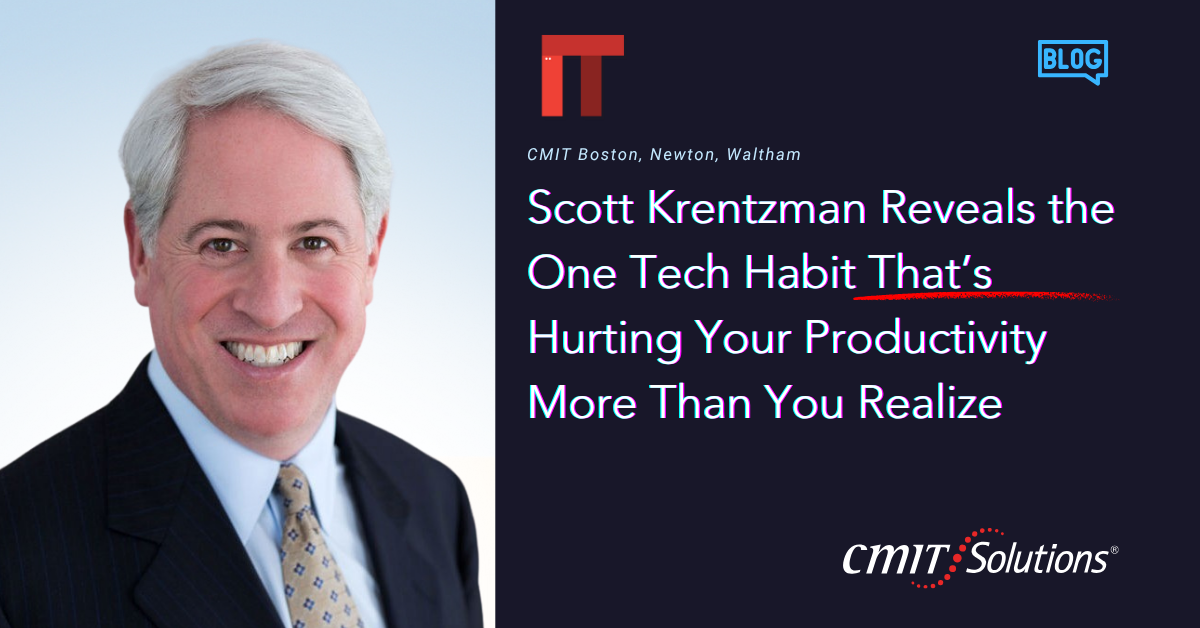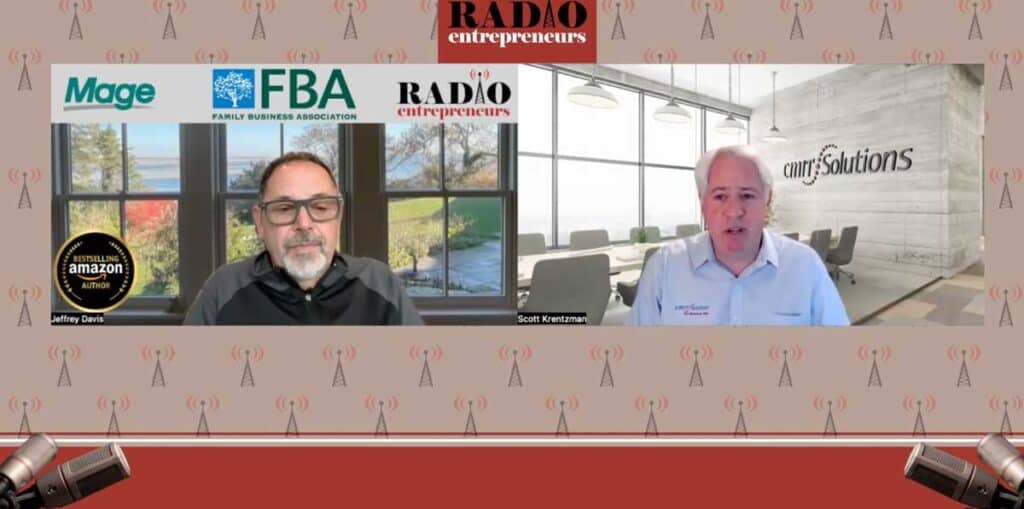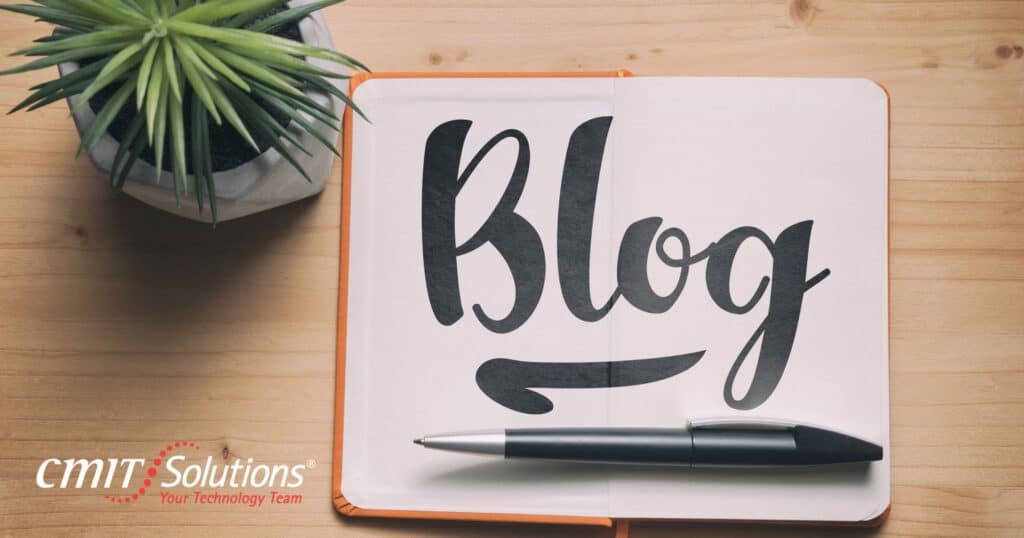Introduction
Every business owner wants to boost productivity. Yet according to Scott Krentzman, President of CMIT Solutions of Boston, Newton, and Waltham, there’s one common tech habit quietly killing efficiency — and it’s more widespread than you’d think. Whether it’s how your team communicates, manages tasks, or switches between apps, this habit creates bottlenecks, stress, and lost time.
So what’s the culprit? Multitasking with fragmented digital tools. From app overload to disconnected workflows, this modern trap is costing Boston-area businesses hours — and thousands of dollars — every month.
What Is the Habit That’s Hurting Productivity?
Scott pinpoints the overuse of disconnected tools as the biggest barrier to productivity. When teams juggle too many apps for chat, video calls, project management, and file storage — without integration — it leads to chaos. Employees waste time switching between platforms and duplicating work.
Instead, Scott encourages businesses to consolidate with smarter solutions. Those who move to unified communication platforms benefit from streamlined workflows, less confusion, and better collaboration. Many Boston businesses have seen improvements after adopting tools outlined in CMIT’s guidance on improving customer service with unified communications.
Why It Affects Small Businesses More
Small and mid-sized businesses are especially prone to this productivity drain. Without strategic IT planning, they often adopt software out of urgency, not efficiency. Teams patch together tools instead of choosing integrated platforms.
This is where managed IT services come into play. Scott and his team help businesses assess their current systems, eliminate redundancies, and create a roadmap for integrated technology that saves time and boosts output.
The Hidden Costs: More Than Just Time
When employees constantly switch between apps, the minutes lost quickly add up. But the real danger lies in:
- Security vulnerabilities caused by inconsistent platforms.
- Compliance failures due to untracked data.
- Duplicate spending on overlapping tools.
Poor tech habits also increase the risk of breaches. According to Scott, businesses without centralized oversight are more likely to fall victim to phishing and malware — risks highlighted in CMIT’s insights on phishing scams targeting SMBs.
A Real-World Fix from Scott’s Team
Scott worked with a Newton-based consulting firm using five different platforms for messaging, scheduling, and file sharing. The team was overwhelmed, often losing track of tasks and duplicating efforts.
After conducting an IT audit, CMIT streamlined their tools, migrated them to a secure cloud platform, and introduced project management software with built-in communication features. The result? A 20% productivity boost and smoother internal communication — all achieved using cloud migration strategies.
How to Identify If You Have This Habit
Wondering if your team is caught in the multitasking trap?
- Are employees switching between 4–5 apps to complete a task?
- Are you using multiple tools for communication that don’t sync?
- Do you store documents across different platforms?
If so, it’s time for an IT self-assessment to highlight inefficiencies and recommend solutions before they slow your growth.
Why Fragmented Tools Can Hurt Customer Service
One of the first signs of poor tech practices is delayed customer support. When reps don’t have centralized access to data or communication tools, responses slow down.
Scott’s clients who consolidated tools — from help desk systems to CRM integrations — noticed faster turnaround and stronger customer satisfaction. By embracing solutions like business automation and intelligent networks, teams serve clients better while working smarter.
The Role of AI and Automation
Modern AI tools can drastically improve how businesses handle repetitive tasks. Scott helps companies implement automation that reduces manual work — such as scheduling, document routing, and follow-up reminders.
With AI-enabled platforms, SMBs can shift their teams’ focus from low-level admin to high-value strategy — increasing efficiency without adding headcount.
Your First Step Toward Streamlined Tech
Scott recommends beginning with an IT roadmap that prioritizes:
- Consolidation of tools
- Elimination of tech redundancy
- Integration of automation where possible
This strategy often starts with cloud services. CMIT has helped many businesses transition securely through hybrid cloud platforms, unlocking mobility and resilience.
How CMIT Boston, Newton, and Waltham Can Help
With 15+ years serving Boston-area businesses, Scott Krentzman leads a team focused on technology strategy, not just tech support. His team provides:
- Expert consulting on IT procurement and optimization
- Cybersecurity-first approaches
- Ongoing strategic guidance
Whether you’re a nonprofit, a manufacturer, or a healthcare practice, Scott will tailor your tech stack to fit your industry and growth goals — ensuring you get results without wasting resources.
Conclusion
The biggest threat to your business’s productivity might not be external. It might be how your team uses technology every day.
By identifying the habit of fragmented tech use and working with Scott Krentzman’s team at CMIT Solutions, you can streamline your systems, reduce employee fatigue, and reclaim valuable time.
Don’t let outdated habits hold your business back.
Start by scheduling your Free IT Assessment today — and take the first step toward smarter, simpler, and more secure technology in 2025.






